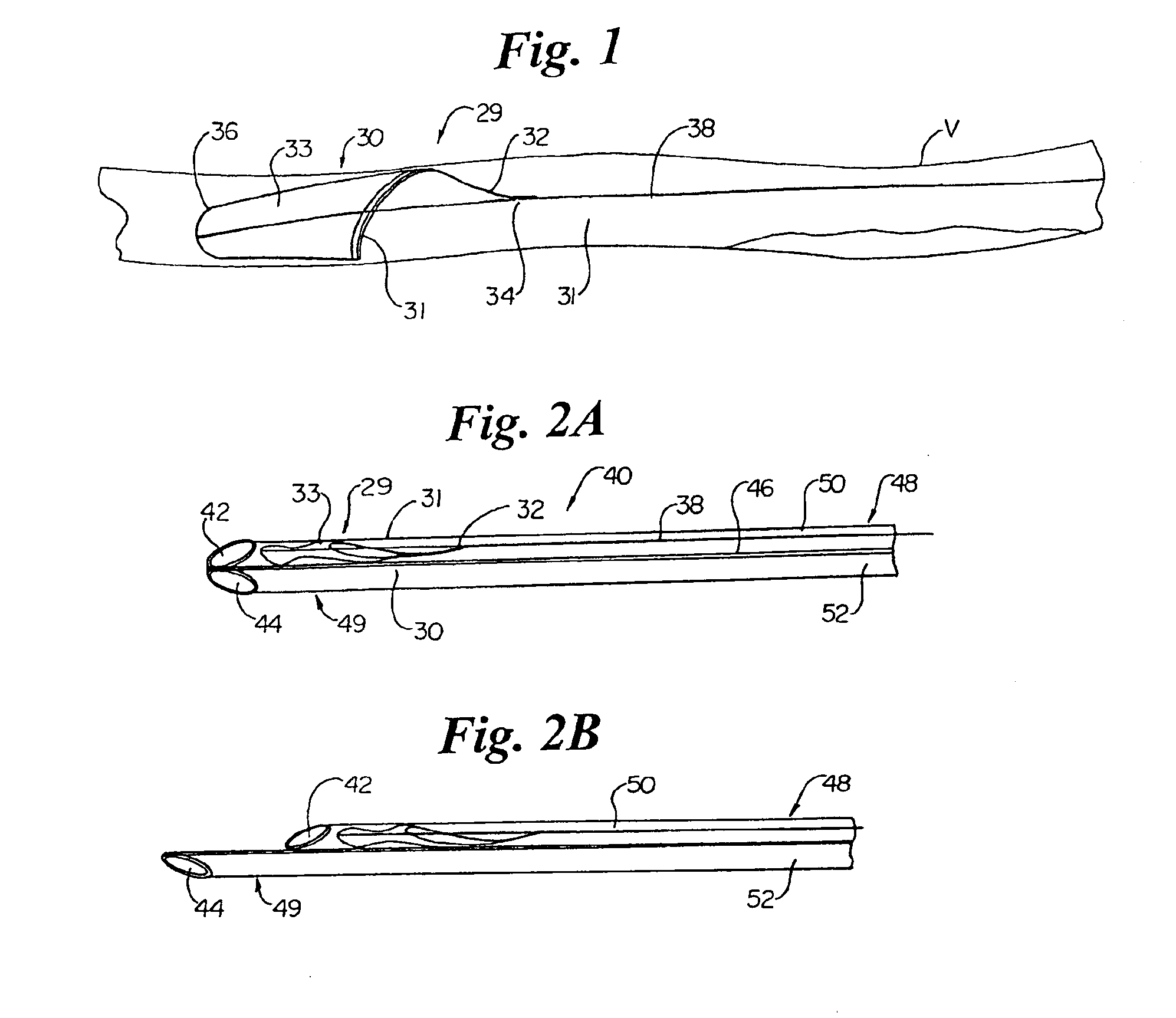Vascular embolic filter exchange devices and methods of use thereof
- Summary
- Abstract
- Description
- Claims
- Application Information
AI Technical Summary
Benefits of technology
Problems solved by technology
Method used
Image
Examples
Embodiment Construction
Rapid Exchange Embolic Filter System
Embolic Filter Assembly
[0036]An embolic filter assembly of the present invention is comprised of an embolic filter operatively coupled to a guide wire. A number of embolic filters are known for providing distal protection against embolization in conjunction with a transluminal diagnostic or therapeutic procedure, such as angioplasty or embolectomy. These embolic filters are deployed distal to a vascular lesion, such as a stenosis, prior to undertaking the diagnostic or therapeutic procedure, and are designed to collect emboli liberated during the procedure to prevent them from entering the blood stream. Generally, embolic filters suitable for use with the present invention are characterized by having a blood permeable sac and a support hoop which forms an opening into the sac; however, other types of filters are also useable with the present invention.
[0037]Referring now to FIG. 1, a schematic of an embolic filter assembly suitable for use with th...
PUM
 Login to View More
Login to View More Abstract
Description
Claims
Application Information
 Login to View More
Login to View More - R&D
- Intellectual Property
- Life Sciences
- Materials
- Tech Scout
- Unparalleled Data Quality
- Higher Quality Content
- 60% Fewer Hallucinations
Browse by: Latest US Patents, China's latest patents, Technical Efficacy Thesaurus, Application Domain, Technology Topic, Popular Technical Reports.
© 2025 PatSnap. All rights reserved.Legal|Privacy policy|Modern Slavery Act Transparency Statement|Sitemap|About US| Contact US: help@patsnap.com



